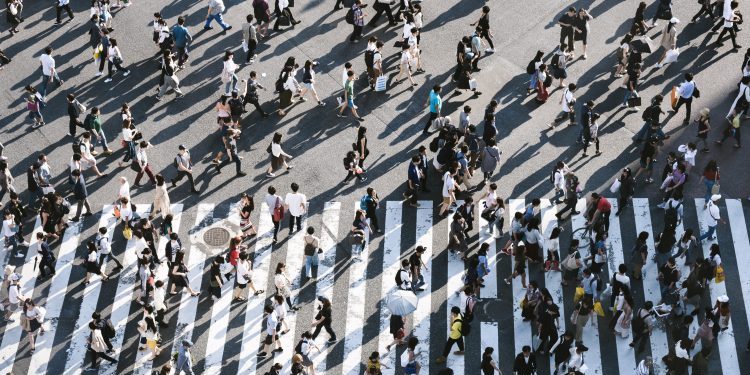Economic segregation isn’t just limited to neighborhoods; it’s part of the places you visit every day.
In a world of increasing urbanization, migration, and mobility, cities are becoming the epicenter of social life. Diverse populations and social cohesion are crucial for sustainable urban development, but cities face rising segregation and inequality. These two forces can erode the urban social fabric, dramatically affecting the economic, social, and health outcomes of people living in urban areas. However, most of our understanding of income segregation comes from where people live, not where people go, preventing us from identifying how people experience income segregation in their daily lives.
A recent paper in Nature Communications, led by Professor Esteban Moro (MIT and UC3M, Spain) and Professor Alex Pentland (MIT), using aggregated and anonymous mobility data from 11 metropolitan areas in the US, found that income segregation is not limited to neighborhoods: the different composition of income groups that visit restaurants, stores, and other places can make those places segregated in their own way. On average, grocery stores and local shops are more segregated by income than museums, art venues, or airports. Factories are more segregated than offices, and some types of restaurants are more segregated than others. But there is also a large geographical variability: places with economically diverse visitors can be only a few feet away from places where only one income group is present. “Even two coffee shops across the street can have very different income segregation,” said Moro. As a result, the way people experience income segregation in their lives depends not only on where they live but also on their mobility patterns and the places they visit. But how?
The resolution of the data allowed the researchers to model mobility patterns within urban areas. Extending well-known mobility models with segregation models, they found that the way people experience income segregation is associated with two different mobility properties. The first is the tendency to explore new places in general. “Explorers” (people that tend to visit new places more often) experience in general less income segregation than “returners” who spend most of their time in a very small set of places. “You might think that explorers are wealthier people, but this is not what we found: explorers live in areas with very different income or education,” said Moro. The key ingredient to understanding place exploration is individuals’ lifestyles. For example, knowing that an individual visits movie theaters, exhibits, coffee shops, or certain types of restaurants (tapas, dim sum, ramen) can tell us more about whether an individual is a place explorer than knowing the income level of the individual.

Since the same type of places can have very different income segregation, the other important component to understanding how people experience income segregation is whether they are willing to visit places where their income group is not the majority. The researchers found that willingness is not associated with the type of places they go to (their lifestyles), but with their educational level, mode of transportation, or poverty level of the areas where they live. That is, it seems to be more related to demographic and residential characteristics.
As a result, the way people experience income segregation in the cities depends on these two independent characteristics: one rooted in people’s lifestyles and mobility patterns, and another that stems from their willingness to go to diverse places, which seems to depend on demographic and residential characteristics. As a result, high-income people can be as segregated as low-income people, and people living in deprived areas can be integrated if they are explorers. “We found that 55% of the income segregation we experienced every day is due to our mobility patterns, the places we visited. Only 45% seems to be associated with the demographic characteristics of the neighborhood we live in,” said Moro.

These findings have implications for our understanding of how income segregation is experienced in cities. Since mobility patterns have such an important effect on it, understanding of urban residential segregation should be complemented with how urban interventions and design affect where residents spend their time well beyond their neighborhoods, and with diverse groups of people. The researchers’ accurate mobility models provide a new path to understanding the relation of income segregation with other processes that heavily depend on urban mobility like transportation, environmental pollution, or epidemics. “Our approach is now being tested to show how the pandemic and the lockdowns have changed the way people experienced segregation during the first waves and the reopening,” said Moro. “We’ve never been so segregated as we were during the lockdowns. The question is if after the reopening, our mobility patterns have changed to increase the experienced segregation or if, on the contrary, we are creating more diverse venues and cities.”
Citation:
Moro, E., Calacci, D., Dong, X., Pentland, A. Mobility patterns are associated with experienced income segregation in large US cities. Nature Communications 12, 4633 (2021). https://doi.org/10.1038/s41467-021-24899-8
Link to the article:
https://www.nature.com/articles/s41467-021-24899-8
Atlas of Inequality: https://inequality.media.mit.edu
Corresponding author: Esteban Moro (emoro@mit.edu), 6177518339


